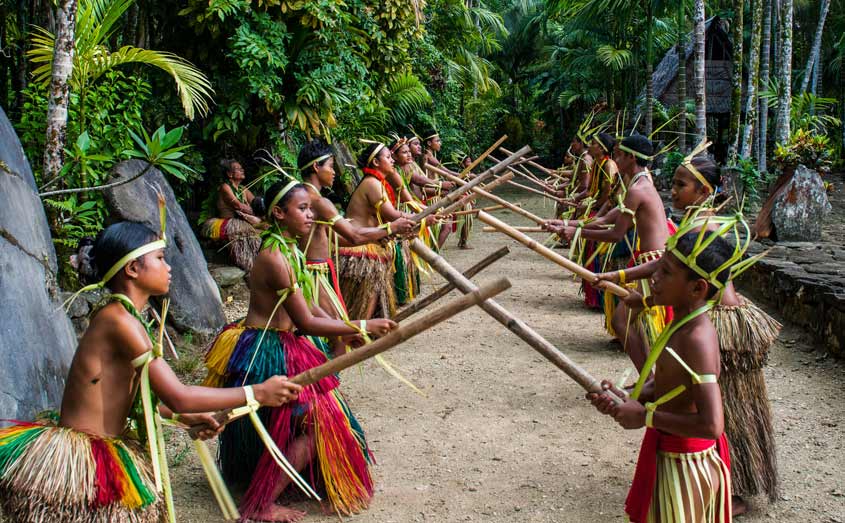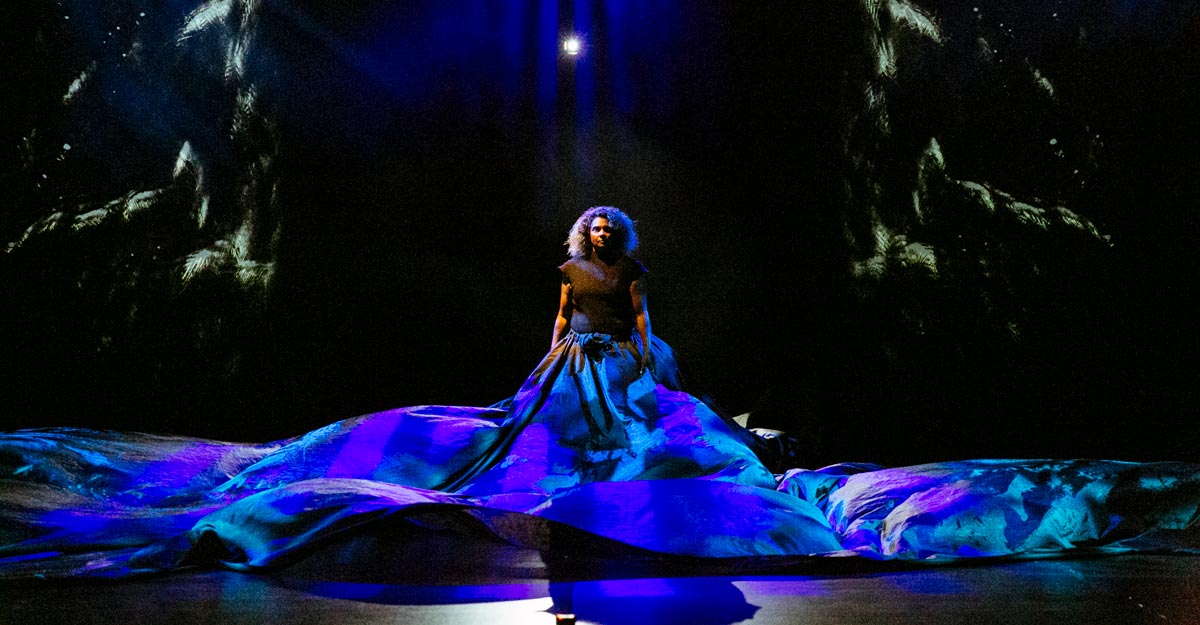By Anna Sinkevich, Traditional Knowledge Division, WIPO
James Johnson is an award-winning artist and a master wood carver from the Dakl’aweidi clan of the Tlingit people of Alaska. Speaking to WIPO Magazine, he reflects on reviving Indigenous tradition and how to work with renowned brands like Vans and Lib-Tech. Johnson’s designs transformed shoes or snowboards into masterpieces of life outdoors. Yet he draws a fine line when protecting his work and culture.

What prompted you to become an artist and a carver?
I have always felt that my purpose in life was to become an artist and to carry forward Tlingit culture and our traditions. As I learned about my heritage, our stories, and how far this art form goes, my path became clear. Today, I can't imagine doing anything else.
When did you start learning about the Tlingit art and how long has it taken you to master it?
Our art form is difficult and takes many years to learn. There are a lot of rules and guidelines associated with creating proper Tlingit art. My learning journey began in 2008. The process of learning how to draw, the foundation of the Tlingit art form, is called formline. That’s something you must learn before you get to carve. The better you are at drawing, the better you are at carving. After around 10 years, everything started to click and finally I achieved the museum-quality level that now characterizes my work.
The better you are at drawing, the better you are at carving.
Aside from being able to carve and draw, you need a solid understanding of the stories and the meaning behind what you're creating. This takes time. The artists that I look up to have been practising for 40-plus years. They're all in their 70s, and, like me, they've dedicated their whole life to the art form.
How do you pass on your knowledge and experience to the next generation?
For thousands of years, carvers in our culture gained their skills through an apprenticeship system. The master carvers would teach talented young men interested in carving all the stories that go along with the Tlingit art form. Young carvers learned mainly by watching and observing the master carvers at work.
It's a huge challenge nowadays to learn the Tlingit art form.
However, the system broke down during Alaska’s colonization, when our people were not allowed to practice our culture, and because of disease, which wiped out three-quarters of the north-west coast’s population. Many carvers passed away before they could share their knowledge. That’s why it's such a huge challenge these days to learn the fundamentals of the Tlingit art form. My dad grew up in that time, so when I told him I wanted to become a Tlingit artist, he fully supported my decision and really encouraged me to pursue this career.
Nowadays, I also teach Tlingit wood carving and art form in the State of Washington and at Port Townsend School of Woodworking, where we have a waiting list for our classes. People fly in from across the country to take them. At Port Townsend, we offer two scholarships per class for Indigenous artists. I also teach back in Alaska at the Sealaska Heritage Institute.

How do you protect your work?
To protect the formline, designs and images of my work, I include copyright notices on my website, and when I work commercially, I retain ownership of the designs I develop. The companies I engage with licence the designs for an agreed fee and period of time.
While being paid for my work is part of being an artist, there are certain aspects of the Tlingit art that aren’t meant for commerce. For example, the clan crests and other cultural elements are sacred to us and protected among our clans. They are not meant for the market or for sharing. Our sacred ceremonial objects include stories and songs, which are called at.oow and are owned by the clan. They are only used for special occasions, such as our potlatch ceremonies called ku.éex.
That sounds like there is a fine line to walk.
These days, there is a relatively clear line between the artistic elements that can be mass-produced and those that cannot. It’s down to the artist to draw an appropriate line between what goes outside our culture and what we keep for ourselves.
What do traditional designs mean for you?
Art is our visual language. Our stories, the ones that were not written down, were passed down orally from generation to generation. The Tlingit art form was an integral part of telling the story of our history and who we are.
I'm from the Dakl’aweidi clan, which is a Killer Whale clan. My forefathers were chiefs of Xutsnoowú kwaan in Angoon, Alaska. When I got into the arts, I asked my dad if there were any artistic pieces left within our family lineage, but sadly none survived. So much was destroyed or taken during colonization and many traditional artefacts are scattered all over the world.
So, for me, pursuing the Tlingit art form carries a much bigger responsibility than simply trying to create something visually pleasing. My ambition is to re-create the traditional pieces used by my forefathers and revive our culture.
In working with fashion brands and companies, how did you decide who to work with?
I live an active outdoor life and love snowboarding, mountain biking and rock climbing. I'm fortunate that the companies that I work with align directly with my lifestyle. Brands like Vans, Volcom, Yeti, Lib-Tech and Smartwool share my values and those of the Tlingit people. As a Tlingit artist, I want to take our art form to new places. Working with these brands gives me the opportunity to do that.

Have you ever refused to collaborate with a brand?
Yes. When companies that don’t share my values approach me, I just say “No, thank you.” I won’t jeopardise the integrity of the Tlingit art form as its integrity is a rock-solid foundation that goes back thousands of years. For me, it's easy to turn people down when our values are not aligned. The brands I work with all respect Tlingit culture and traditions.
What lessons have you learned from brands you did decide to work with?
Visual aesthetics is one side of our traditional art, but its underlying meaning is even more important because that is what carries our stories and traditions forward, so I’ve learned that education is crucial. When I signed my contract with Smartwool, I gave the company’s employees a presentation on Tlingit arts, culture, and traditions to help them develop a strong understanding of my people.
I make a point of helping every company I work with to understand Tlingit art and culture.
When brands offend our values, I don't think they do it out of spite or vengeance or anything like that. Very often, they just don't know. That’s why I make a point of helping every company I work with to understand Tlingit art and culture. It's an important foundation for building the organic and healthy relationships I have with the brands I work with.
When you collaborated with Vans, you donated a part of the proceeds to your community to support young people. Why was that important for you?
Giving proceeds back to my community in Alaska is a prerequisite for me when I collaborate with a brand, and helping Indigenous youth means a lot to me. Together with Vans, we created a Snow Sports program for Indigenous youth to teach them how to ski and snowboard.
The same happened with Lib-Tech. The snowboard I do for them is called the Double Dip model and together we donated a portion of the sale of every snowboard to the Sealaska Heritage Institute, which is building an arts campus in my hometown to teach people the fundamentals of Tlingit art and language.

As an Indigenous artist, what makes for a successful collaboration?
It is important that brands trust the Indigenous artists and their abilities and involve them, as much as possible, from start to finish. When Vans gave me full freedom throughout the design process, the design came out exactly as I envisioned. They loved it. We were both very happy with the outcome.
Collaboration is also about being fair with the artist, how they are compensated, and the royalties paid. This includes donating a portion of the proceeds to the community.
A successful collaboration is also about being fair with the artist, especially in terms of how they are compensated, and the royalties paid. This includes donating a portion of any proceeds to the community, which really takes the brand’s commitment to our art and culture to a different level.
These collaborations also give Indigenous artists the freedom to create these objects and dedicate their lives to their craft.
What advice would you offer businesses that wish to collaborate with Indigenous artists?
Be open and listen to the artists. Take the time to learn about and properly understand the culture and heritage that underpins their designs. Honor the artists and allow them to display their culture exactly as they wish.

And in turn, what advice do you have for Indigenous communities and artists seeking to collaborate with fashion brands or other companies?
Creating a single work of art involves a lot of effort. So, I focus on being open, positive and really good at what I do. Some people are attracted to that and to me as an artist. Vans followed me online for two years, watching how I presented my work and Tlingit culture to the world, before working with me. In my contract with them, they asked me to curate my Instagram and Facebook accounts to market our collection. Similarly, I secured a straight endorsement contract with Smartwool, which allowed me to represent the brand and PR and promote our products.
When you get opportunities to present yourself and your culture, you need the courage to say “yes” and to deliver like a true professional. But you only get to that point after years of hard work. That’s how you build a solid foundation to take your work forward.
By following my own path and making my own trail, I'm showing others that this is all possible.
What insights did you gain from the WIPO High-Level Dialogue on Indigenous Peoples, Traditional Cultural Expressions and Fashion?
Like me, most Indigenous artists and communities are hyper-focused on their art. Participating in this WIPO event in Geneva really changed my perspective. I met Indigenous artists from around the world. While we all have different cultures and traditions, we share similar daily challenges in moving our cultures forward. It was special to see such a wide range of artists and communities working to set up guidelines to help future generations navigate this new area. This is ground-breaking territory. Also communicating with the fashion brands and creating spaces for Indigenous artists and brands to meet is an important step that will create positive ripples.

What are your plans for the future?
I'm very thankful for all the opportunities that come my way throughout the year. Recently, I signed with a company in New York to present my work at an exhibition featuring 50 other artists. It’s set to open in August 2024. I also plan to continue working with sports brands and museums. As time and energy are so precious, I must focus on what I put into my day-to-day work. I'm really happy to be at the point where I can take on commissions and create Tlingit art as a professional.



